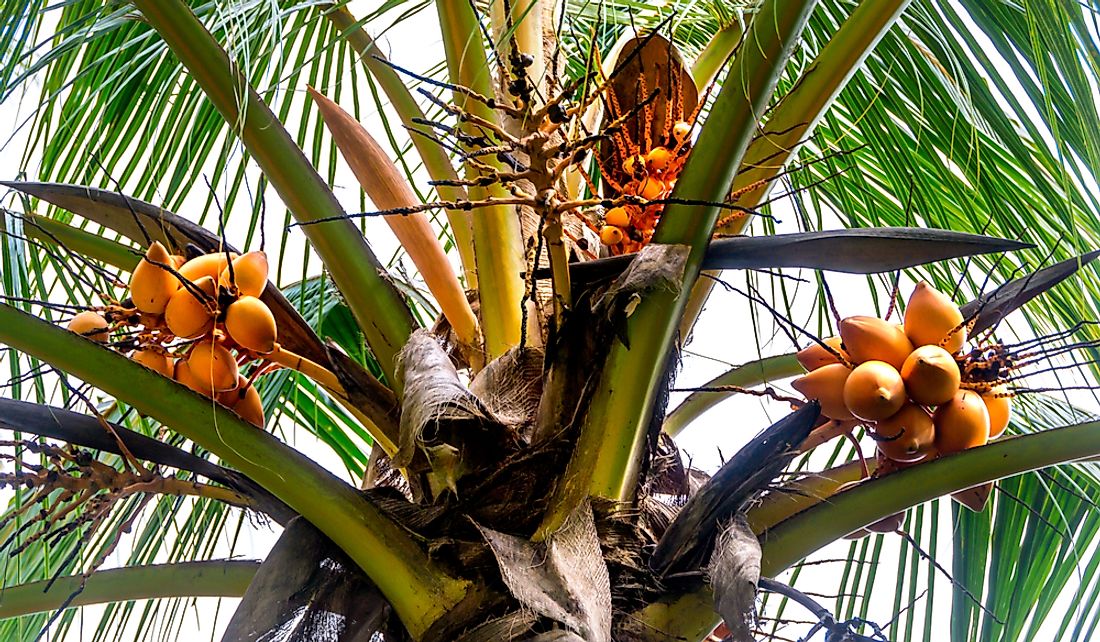What Are The Natural Resources Of The Solomon Islands?

The Solomon Islands is located in the southwest Pacific Ocean. The country consists of six major islands and several smaller islands in Oceania. In total, there are 992 islands distributed over approximately 1.3 million square kilometers of the sea. However, the country itself covers an area of approximately 28,000 square kilometers. The largest island is Guadalcanal Island which covers an area of approximately 5,340 square kilometers. It is the location for the country’s capital, Honiara. Solomon Island is a lesser developed country with a per capita GDP of about $600. The majority of its labor force (75%) is engaged in fishing and subsistence farming. The country imports most of its manufactured and petroleum products. Its major export includes timber, copra, and palm oil. Fisheries is also a prospect for export. Tourism is an important service industry whose growth has been slowed by the transport limitation and lack of proper infrastructure. The islands are rich in underdeveloped and unexplored mineral resources such as zinc, lead, gold, and nickel. Coconut trees are an important natural resource of the Solomon Islands.
Coconut
Coconut is an integral part of the livelihood system for the majority of the Solomon Islanders, especially those in the rural area. Coconut is a common food item for most households, with copra as the most widespread cash crop in the country. The island country is characterized by long-standing volumes of coconut trees which comprise of a mix of the large old plantation and medium-sized smallholder plantations. Over half of the cultivated land in the Solomon Islands is under coconut. It is difficult to estimate the production volumes as coconut trees are widespread on all the islands and a great deal of the trees go unharvested because some of the islands are uninhabited due to difficulties of access. Thus, there is a large reserve of untapped coconuts. However, the Solomon Islands is still one of the largest producers of coconuts in the world producing 410,000 tons of coconuts for export in 2016. The smallholder plantations account for the larger proportion of the total planted area. Although timber, palm oil, fisheries, and cocoa earn higher levels of export income, coconut has a direct and indirect effect on the larger part of the population and are critical for the poorer population.
Fisheries
Fisheries is a major export earner for the Solomon Islands. However, the recent civil disturbance has had a severe effect on the fisheries situation in the country. In 2000, during the onset of the violence, several fishing companies and enterprise closed including Solomon Taiyo Limited. The suspension of the air services to the country further crippled the fishery sector. Despite the challenges faced by the sector, fisheries is still an important component of the country’s economy. The fisheries situation in the Solomon Islands is characterized by large subsistence fisheries and lesser small-scale commercial fisheries. Approximately 90% of the population of Solomon Island inhabit the rural areas, so subsistence and artisanal fishing activities are most common. The fisheries are mainly concentrated on coastal and nearshore reefs and lagoons. Some of the targeted fish resources in these areas include finfish, trochus, lobster, giant clam, and turbo. Small-scale commercial fishing is mostly concentrated in urban areas of Honiara, Auki, and Gizo. Solomon Island is the largest producer of trochus in the Pacific Island region, with an average of 400 tons per year. Another form of small-scale commercial fishing is that of non-perishable products for export. These products include trochus shells, shark fins, and beche-de-mer. These products are major sources of income for the Islanders, especially those living in the isolated villagers, following the demise of the copra industry.
Forestry
The Solomon Islands has six distinct forest types which vary in magnitude from one province to the other. However, the type and range of plant species are fairly similar between islands despite their geographical differences. The forest types are affected by soil type, climate, topography, human activities, and altitude. The six forest types in the Solomon Islands include low-land rainforest, montane forest, hill forest, freshwater swamp, grassland forest, and swamp forest. Solomon Island has about 5,000 species of plants, of which 500-600 are exotic. Commercial logging has over the years changed the forest cover of the country’s main islands. Deforestation is a major threat with forest cover estimated to have decreased to about 75% today compared to 80% in the 1990s. Solomon Island is estimated to have 28,000 hectares of the commercial area of plantation forest. This area covers the large forest plantations established in Viru, Alu, Gizo, Kolombangara, Choiseul Bay, Santa Cruz, and Moli.
Gold and Other Minerals
Prospecting for gold in the Solomon Islands began in 2010. However, gold was first found in the Gold Mine area near Matepona River in 1568. The discovery was attributed back to the Gold Ridge Mine. The first European explorer to visit the Solomon Islands archipelago was Alvaro de Mendana, naming it “Islas Salomon.” He believed that the archipelago contained great riches and was the source of biblical King Solomon’s source of gold that he used to build the temple. Several years later, the search for gold is still on, with the government issuing about 60 prospecting licenses and two mining leases. Gold production on the Solomon Islands began in 1998 at the Gold Ridge Mine in Guadalcanal. However, the mine was abandoned in 2000 because of the civil unrest but production restarted in 2010. Gold Ridge Mine was declared a disaster area in 2015. Other untapped minerals in the Solomon Islands include zinc, nickel, phosphate, and lead.











